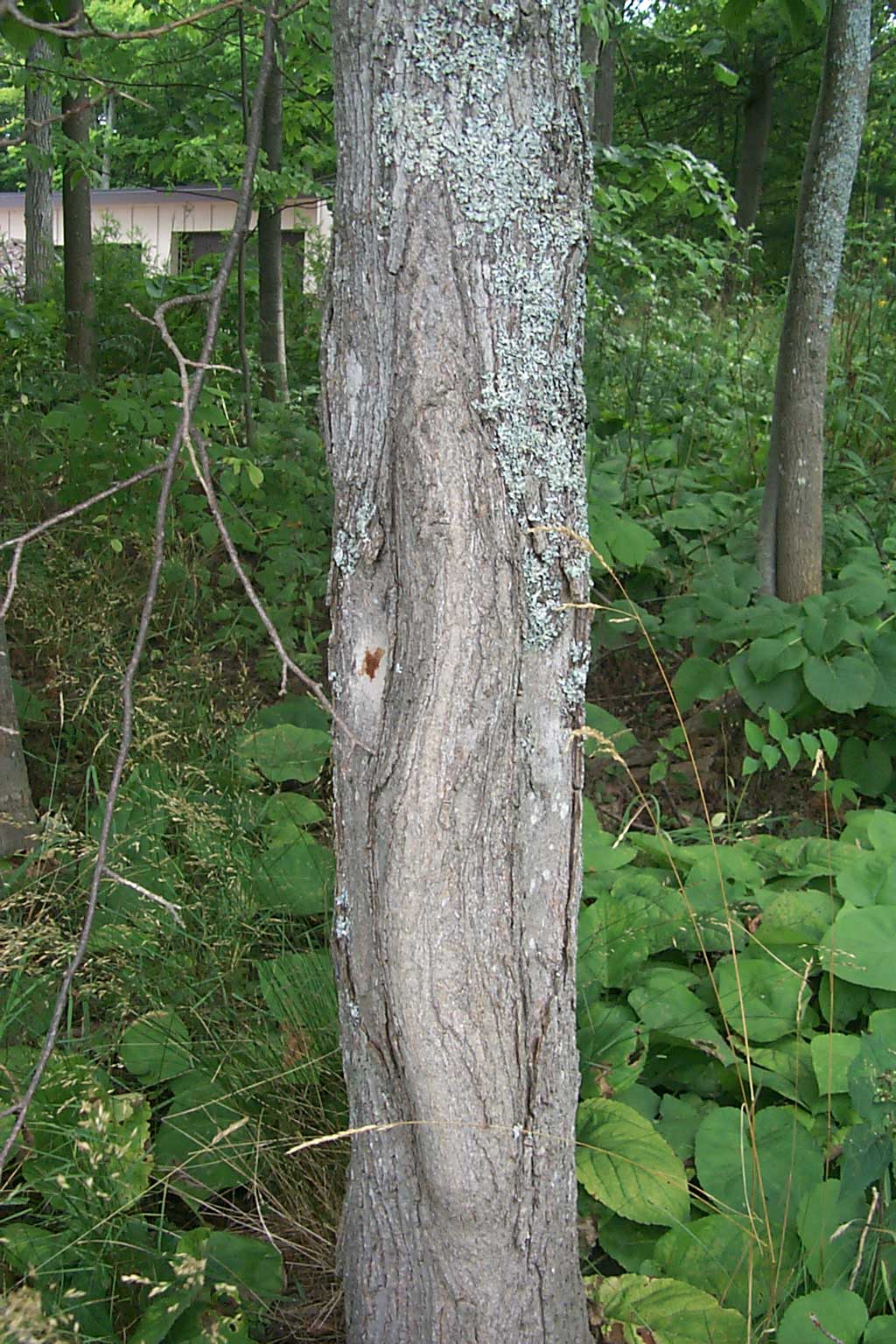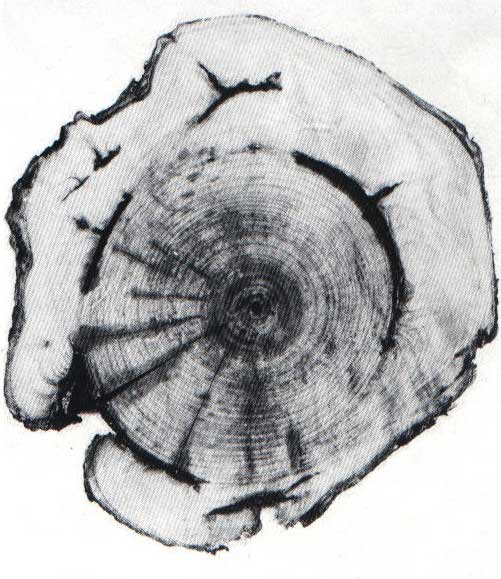
| Home |
| Tutorial |
| Photo Gallery |
| List of Defects |
| Links |
| Bark Distortion |
| Bird Peck |
| Bumps |
| Burls |
| Butt Scars |
| Butt Swells |
| Cankers |
| Conks |
| Epicormic Branches |
| Flanges |
| Flutes |
| Forks |
| Galls |
| Holes |
| Knots |
| Lesions |
| Limbs |
| Ring Shake |
| Rot |
| Seams |
| Soak |
| Splits |
| Wounds |
Stem lesions develop mainly in the lower 8 feet (2.4 m) of the trunk but have been found at a height of 25 feet (7.6 m). 
Significance: Underlying the callus and abnormal wood in a sweetgum lesion are longitudinal concentrations of ingrown bark and stain. In black cherry, cambium miners initiate a tunneling process in a twig or branch in the crown, progress down the tree trunk in a zigzag course into the roots, and emerge to pupate in the soil. The tunnels and minute lines of darker color are accompanied by the defect called pith fleck or pith-ray fleck.
In veneer logs, a stem lesion always is a degrader because it is combined with stain, rot, ingrown bark, callus, or any combination of these. The most serious damage is in the important veneer species sweetgum and sugar maple, in which new lesions may develop annually from Fusarium spp. and Botryosphaeria dothidea. Fusarium spp. cause degrade in veneer logs in the largest number of species, including the cottonwoods, maples, at least three southern bottom land oaks, yellow-poplar, tupelos, and black walnut.
In factory logs, a lesion is always a degrader, especially if there is more than one lesion in the log. This often is true of sweetgum, maple, and tupelo. Lesions are so closely related to cankers that they can be treated like cankers in logs where more than one face is affected.
In construction logs, scattered lesions do not disqualify a log unless they are long and show pronounced callus indicating ingrown bark, abnormal wood, and possibly decay.
In standing trees, stem lesions can seriously affect timber quality in trees of 25 hardwood species. The surface indicators of stem lesions differ greatly in size and appearance. The type and volume of damage withing the stem associated with each indicator also vary greatly. The small lesions are caused by Fusarium spp. or the gnawing of red squirrels on the bark of sugar maple. This usually results in only small areas of stain within the bole. Ononotus hispidus and Cystostereum murraii cause large cankers and lesions, sometimes extending several feet along the trunk. They always are associated with massive accumulations of interior rot.

